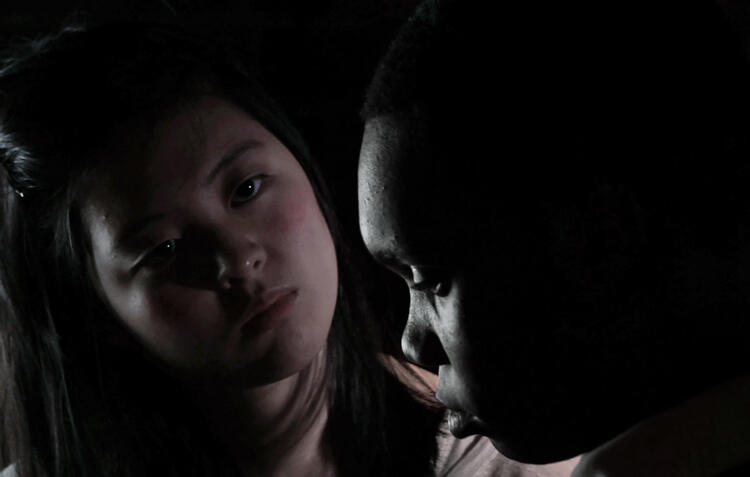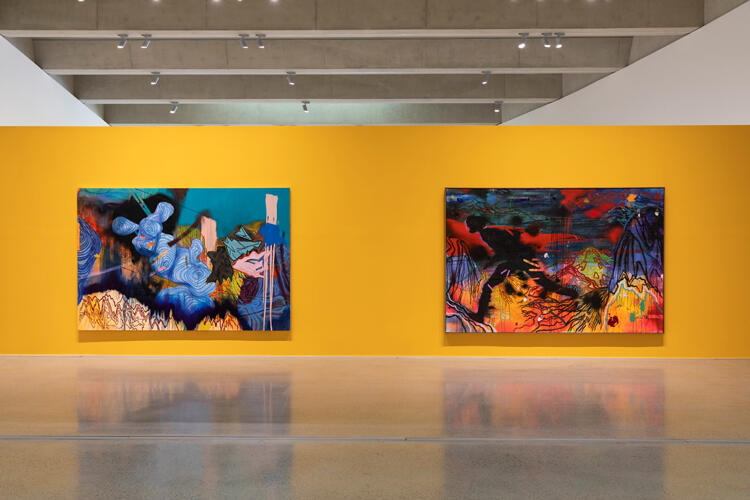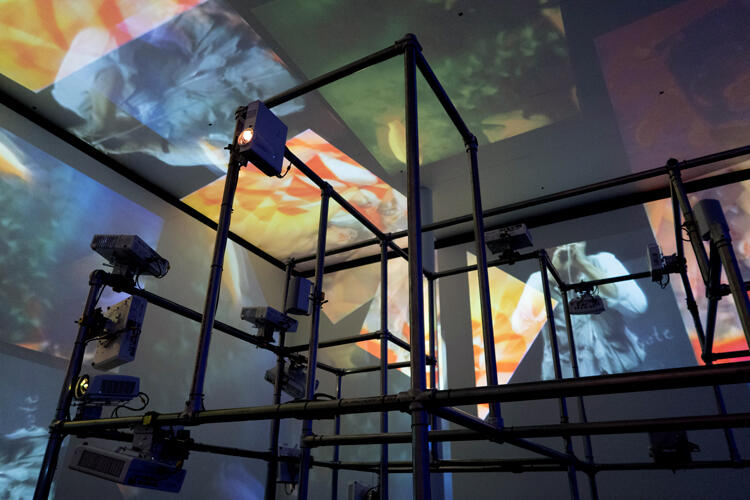The Best Shows to See in Seoul Right Now
In celebration of the Inaugural Frieze Seoul, here are must-see shows right now to catch if you are still in Korea
In celebration of the Inaugural Frieze Seoul, here are must-see shows right now to catch if you are still in Korea

'Sung Hwan Kim: Night Crazing'
Barakat Contemporary
30 August - 30 October 2022

Sung Hwan Kim’s films and videos, two of which are currently on show at Barakat Contemporary alongside a selection of drawings, reconstruct context to expand our sense of time and space. Love Before Bond (2017) is the artist’s response to witnessing his Korean-American niece questioning her identity as an adolescent. The film’s protagonists are played by teenagers, including Kim’s niece and the son of US author Ta-Nehisi Coates, to whom Coates addressed his epistolary novel about American racial violence and culture, Between the World and Me (2017). Overlaid with a narration that includes quotes from the writer and activist James Baldwin, who inspired Coates’s book, the work spins together an ahistorical exploration of aesthetics and otherness.
'Daniel Richter: My Lunatic Neighbar'
Space K
23 June - 28 September

Forms that are not entirely recognizable stimulate our imagination. German painter Daniel Richter conveys something ineffable through his paintings, which traverse abstraction and figuration. This exhibition condenses his visual language over the past 20 years. Complex socio-political events metamorphose on his canvases into vivid colour contrasts and abstract patterns. The recent work Tränun Und Gesabber (Tears and Drool, 2021) – which ostensibly depicts two young male soldiers who were dismembered in World War I – in fact dispenses with narrative as the boys’ bodies become a means for experimentation with the entanglements between colour and line. In Phienox (2000), inspired by terrorist attacks on US embassies in Tanzania and Kenya in the early 2000s, violent imagery is replaced with an ambiguous sense of time and space through the presence of anonymous figures with distorted facial features and indistinct structures, which exist as coloured patches of canvas. Here, socio-political structures collapse in intricate and protracted ways untraceable to singular events.
'Hansaem Kim, Joohye Moon: Crossover'
ThisWeekendRoom
24 August – 18 September

Joohye Moon majored in Korean painting, but her work is drawn from a range of cultural sources – icons from vanitas paintings and tarot cards, for instance, denote specific human emotions and life trajectories – and imbued with her own perspective. A carpet installed in the basement is enigmatically entitled Air Force (2022), despite its splendid composition reminiscent of medieval Christian frescoes such as Giacomo Borlone’s The Triumph of Death (1485). Meanwhile, Hansaem Kim’s pixelated video games on defunct CRT televisions tell a narrative in virtual space-time reminiscent of a banal fantasy novel. Kim presents what he terms ‘by-products’ of that story in the form of artworks such as The Death of Cainman (2022), a brightly coloured acrylic painting that depicts seven small dragons flitting around a larger dragon being attacked by an angel, subverting common portrayals of good versus evil. Elsewhere, in The Birth of Azabel (2022), Kim borrows the mosaic method and form of nicchia – the arched architecture used in ancient Roman temples – and layers this small sculpture of a gold angel with his own story. The process of overlaying a fictional context onto real art-historical and cultural references makes the familiar strange, thereby suggesting alternative realities.
'Nam June Paik, Super Baroque'
Nam June Paik Art Center
20 July 2022 – 24 January 2023

How does Paik’s ‘analogue immersion’, as the Nam June Paik Art Center dubs it, differ from the ultra-high-resolution digital immersion of today? Commemorating the 90th anniversary of Paik’s birth, this exhibition presents the artist’s historical, site-specific, large-scale media installations accompanied by his renowned video sculptures. One Candle (1988), for instance, is an image of a candle projected onto the wall using five CRT projectors that transform the flame into a spectrum of light. Elsewhere, Sistine Chapel (1993) sees the installation of 40 projectors on high scaffolding and the screening of a four-channel video onto the surrounding walls and ceiling. The footage includes such disparate visuals as a shoal of fish, the American flag and the artist Joseph Beuys, leading to a sense of disorientation that feels distinctly contemporary in its all-consumingness.
Lee Seung Jio
Kukje Gallery
1 September – 30 October

Cylinders reminiscent of iron pipes fill the canvas in a dense but orderly manner in Nucleus (1987), a painting by Lee Seung Jio, who passed away in 1990. Lee was one of the founders of Origin, a group that emerged in the 1960s as part of the Korean avant-garde, whose aim was to return to pure painting with geometric abstraction. Regarding the basic unit of visual language as the cylinder, which he named the ‘nucleus’, he created this motif by taping off the edges of each band of colour and using a flat brush to apply light paint to the centre and dark paint to both ends. Repeating this action created a smooth gradation that appears three-dimensional; he then sanded the canvas to add lustre. The nucleus takes many forms: it may be part of a strict hierarchy that includes its textured metallic form set against a background, as in Nucleus 77 (1968), or it may be surfaced with a transparent, soft, diagonal texture, like a gentle wave, as in Nucleus 75–10 (1975). Lee welcomed new movements, such as conceptual art or minimalism, and absorbed the focus on materiality of Dansaekhwa, the Korean monochrome movement, in the mid-1970s. Fittingly, however, his ‘nucleus’ was always at the core of his oeuvre.
Main image: 'Hansaem Kim, Joohye Moon: Crossover', 2022, installation view. Courtesy: ThisWeekendRoom




















